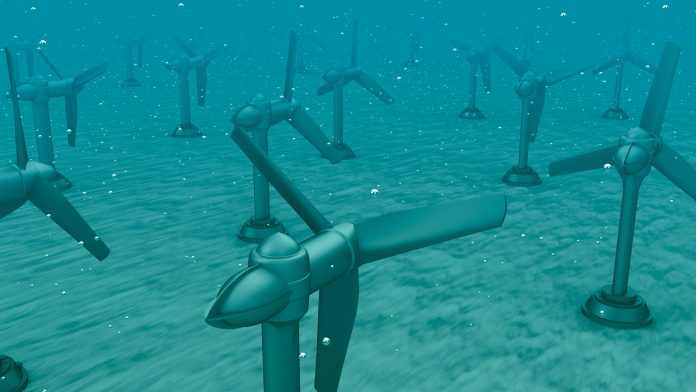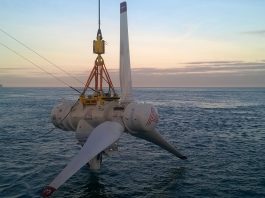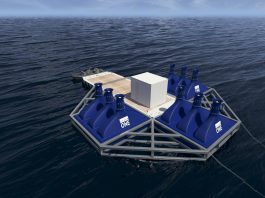Dr Tobias Breitbach, Managing Director of REAC Energy GmbH, discusses the company’s small water turbines and the role they can play in decarbonisation, as well as the barriers to commercialisation.
REAC Energy is consulting and helping other companies to come up with game changing solutions in an effort to shape a CO2-free future. It is also working to develop fish-friendly water turbines for ultra-low head river and dam applications. This solution, the StreamCube, provides a modular plug and play solution for generating reliable renewable base load energy from tidal streams and rivers with ultra-low head in a highly fish friendly manner and in a tailored scale.
Dr Tobias Breitbach, the company’s Managing Director, spoke to The Innovation Platform about his vision for the future, the barriers to commercialisation, and the need for more support for new solutions that have the potential to help tackle climate change.
What is the background behind REAC? What are your ambitions?
REAC Energy GmbH is a German company focussing on the development of water turbines as well as on designing and optimising third party production processes. We founded the company in 2013 to come up with a new way of defining water turbines. Driven by our educational background in production technologies we always focus on the modular and scalable structure as well as the production process – that means we try to take the whole manufacturing and assembly processes into account without the usage of any special equipment.
Having the idea in mind to make use of slow but high-volume currents like ocean currents, tidal currents, or flat land river applications, we came up with a comparatively small but scalable solution based on the dimensions of standard transportation containers. The water turbines are easy to manufacture, easy to transport, and easy to scale by assembling them with their twist locks. Nothing special.
Sketching this idea, we were able to convince early-stage Investors to fund the first phases – conducting 1:10 model tests at DST (the test centre for shipbuilding in Duisburg, Germany). Based on the results, we received further funding for attending the ICOE in Edinburgh in 2016, as well as conducting full scale tests supported and executed by Leask Marine Ltd. on the Orkney Islands.
What are your experiences in the sector and how do your products and services help to solve some of the challenges being experienced?
The first time we really dove into the sector and its community was in 2016 at the ICOE in Edinburgh. All relevant players in and suppliers of the sector were showcasing their technologies and discussing the way to move forwards. On the one hand, the common opinion was that 2018 would be the year of water-based energy, and lots of plants will be touching water, after which time an industry would be established that would generate a lot of jobs and contribute to the electricity production massively. On the other, we felt as though we were being regarded as the new kids on the block. Everyone was asking who we were, why we were coming up with small water turbines, and where we were getting our funding from.
During later conferences, we recognised that the sector is comparatively small, focussing on a few technologies, and that there are almost no private investors or other financing options other than public (EU) money. Public funding seemed to be the motor of the sector.
From the technical point of view, most technologies were based on the principle of uplift – working like windmills with comparatively high RPMs. Certainly, there are spots with high flow speeds where these types of water turbines have much higher efficiencies than other types. But discussions with biologist led us to believe that biological growth and corrosion will start immediately and that this would dramatically reduce the efficiency. High Rpm and the velocities of the blades perpendicular to the flow can harm fish etc.
Consequently, we kept focussing on the drag-based design to reduce the influence of biological growth and to avoid collisions with animals.
What are the StreamCubes designed to achieve? What did the recent full scale pilot demonstrate?
StreamCubes are based on the principle of drag. They work like fully-submerged waterwheels. They have a vertical axis with blades that can fold close to the core or open themselves depending on their angular position in relation the flow direction. Those blades are opened by the waterflow and transfer the kinetic energy of the flow into the rotation of the shaft. When no longer in the flow, they fold close to the core to reduce drag while moving against the flow. In this way, the StreamCube can make use of very low velocities and ultra-low drops, e.g., in tidal barrages or flat land rivers.
In 2017, we developed our full-scale prototype, equipped with the required sensors to prove the expected power output curve. The mechanical prototype was constructed by PEM Motion GmbH in Aachen, Germany. Once being shipped to Leask Marine Ltd. on the Orkneys, the StreamCube was mounted on the C-Odyssey, Leask’s working vessel, and pushed through the water. The velocity of the vessel, representing the current speed, was transferred into the movement of the blades and rotation of the shaft. RPM and torque were measured and ultimately represent the StreamCube power efficiency.
The findings, backed by field data from the Orkney tests, confirmed all calculations and previous scaled tests at DST.
In free-flowing conditions water can pass around easily, meaning that drag-based working principles are not that efficient when compared to uplifted-based systems. Facing similar costs for grid connections and potentially higher foundations, the free flowing StreamCubes will have higher LCOE. But other factors such as a robust design, little effect of fouling on the performance, and no special equipment needed to produce install and operate the systems are a plus.
What stage has REAC reached today? Where do your priorities lie?
Combining our test results and entrepreneurship, we were very excited to be part of a growing sector. Given public discussions around climate change, we believe there must be a need for solutions such as the StreamCube. We are therefore working to identify pre-commercial customers as well as founding options in order to reach commercialisation.
Together with different projects partners, we attempted to obtain funding from different project sponsors (public and/or private) like Horizon 2020 and InnoEnergy. However, we were unsuccessful – mainly due to a lack of customers and long-term business cases, which did not show a ‘sufficient’ potential to grow.
We have decided to stop spending huge amounts of money and time to further developing StreamCubes and sites. But in order to be able to afford further developments – once the boundary conditions are change – we are working for third parties, essentially helping to develop environmentally friendly processes, products, and production processes. We still believe that we can have an impact on the environment through our actions, even though that is not currently via the StreamCube.
What are your hopes for the future?
In our opinion, we face a situation where on the one hand, established renewables already receive significant subsidies and can show attractive business cases (such as wind and solar power). But on the other, the established renewables are not really predictable and thus cannot solve the energy transition alone. There is almost no renewable energy solution out there to provide some sort of base load power without a storage solution alongside it. Consequently, new sectors and technologies cannot compete due to the lack of subsidies and development time.
Can we really afford not make use of the energetic potentials – regardless of whether it is driven by costs or by administrative burdens? The economic gap to other technologies must be closed. Otherwise, that sector will not develop and contribute to the energy supply and CO2 reduction that the world needs. In the meantime, multiple key demonstrator projects and test sites for ocean energy are yet to be completed.
The StreamCube is not yet fully developed, but it has been tested at scale and full-size prototype level. Therefore, the energy output for potential future projects can be calculated. Furthermore, the theoretical advantages seem to make the StreamCube an interesting alternative solution – such as its slow rotating speed (approximately half of the current speed); its modular and robust design; and the opportunity to manufacture and move the StreamCube worldwide without special equipment. In addition, there are sites such as in Maastricht (where RWS is upgrading an old sluice for long term tests), which can enable short term optimisations and testing on the way to commercialisation.
REAC is ready for further developments, but we need people to share our vision and believe in what we can achieve in order to overcome the regulatory burdens and subsequently attract customers.
Please note, this article will also appear in the seventh edition of our quarterly publication.









